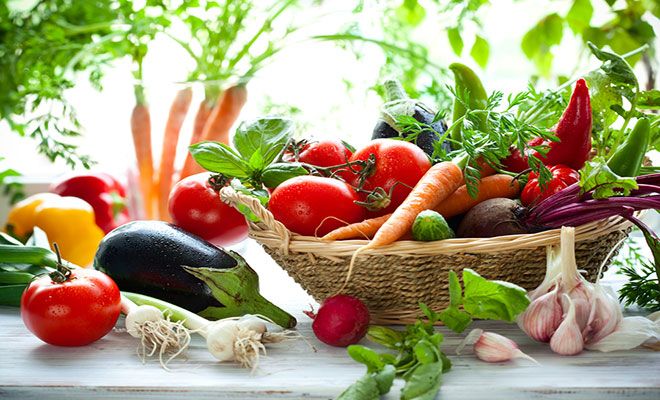
Food
Probiotics- Going with your gutt (Cynthia Lair)
Fermented & cultured foods: the surprising health benefits
March 2013 by Cynthia Lair
Some call them bacteria or bugs but the nice name for this lively population is “flora.” More than 500 different species make up the flora in our bodies, weighing in at between 2 and 5 pounds.

This colony of microbes doesn’t just coexist within us. Our health is dependent upon their ability to stay healthy and report for work each day. Here’s why.
Five ways bacteria help
Twenty-four hours a day our gut flora work to help us thrive. Here’s a top five list of chores the microbes do for us:
- Prevent the growth of pathogenic bacteria by recognizing and squashing out the invaders that might make us sick.
- Aid digestion by breaking down food, extracting nutrients and even synthesizing some nutrients (such as vitamin K and biotin).
- Regulate the constant regeneration of the gut lining.
- Produce hormones that regulate fat storage.
- Prevent depression.
What? Prevent depression? Seems so.
Findings published in “Proceedings of the National Academy of Science” show a link between probiotics and lower levels of stress hormones, and protective effects against depression.
Not only that, these trillions of good guys — live microorganisms in fermented and cultured foods — also have been linked to obesity prevention. Accumulating research indicates lean people tend to have a higher proportion of two types of beneficial bacteria than obese people.
Scientists and researchers only are beginning to study and realize how crucial the vitality and makeup of our flora is to our body’s overall health. The microbes living in the gut are anaerobic — meaning they die as soon as they are outside the body. So it wasn’t until we could snoop around inside the body undetected with microscopic instruments that some of this information could come to light.
All the important work of the flora can be accomplished only if the good gut bacteria outnumber the harmful bacteria. A ratio of 85 percent good microbes to 15 percent bad is ideal. But most Americans house the reverse (20 percent good and 80 percent bad) and it’s wreaking havoc on our health.
When the bad guys are in charge, our immune system is weak. Allergies, skin problems, irritable bowel syndrome and even some autoimmune diseases are being linked to a feeble first line of defense.
Why don’t we have more friendlies and fewer unfriendlies? What’s to blame?
Five ways we kill good bacteria
Well, here are the top five ways we destroy or handicap our hardworking good microbes:
- Antibiotics are indiscriminate. They kill all biotics — not just the bad guys. Sure, we hopefully aren’t prescribed antibiotics that often, but many Americans consume tiny doses daily when eating meat from sources where antibiotics are used routinely. Contraceptive pills, painkillers and cyclin drugs also are thought to stimulate the growth of bad bacteria or eliminate the essential good guys.
- Natural foods grown organically are full of vitamins, minerals and amino acids that help usher in and grow friendly bacteria. A diet of poor-quality, non-organic, highly processed food may not kill good bacteria but may encourage bad bacteria to thrive and be a factor in the increasing number of food allergies.
- Our push toward super-cleanliness during the last century has helped us get rid of many infectious diseases, but the double-edged sword may be lopping off the heads of our good bacteria. Using antibacterial soaps and antibacterial cleaners, and pasteurizing foods — these seemingly progressive practices also destroy friendly microflora.
- American addictions to sugar and white flour may not kill good bacteria in the gut but consumption of these foods helps the bad guys proliferate. Dr. Dale Jacobson’s epic essay on digestion (jacobson chiropractic.files.wordpress.com/2011/08/microvilli1.pdf) describes eating sugary, white-flour products as “basically making a paste in your gut” that “promote[s] gut worms and other exciting parasites.” That sure seems like a description of bad gut guys getting the upper hand.
- Chlorinated water, which we drink, swim and bathe in, is an enemy of the good bacteria in our gut. Like antibiotics, chlorine is indiscriminate in what bacteria it kills.
Stress, that fluttery “I can’t ever get all these things done” feeling, would be number 6. It gets honorable mention.
But before you stress out about not having enough good microbes populating your gut and decimate even more good guys, let’s push on to the good news.
Cultured and fermented foods
Cultured and fermented foods, rich in the good microbes that help our flora flourish, have been consumed by humans for millennia. Turning cabbage into sauerkraut, milk into yogurt, and soybeans into miso isn’t new. These practices were necessary to preserve food through lean times when fresh vegetables weren’t available or the cows weren’t lactating.
A study from the “Journal of Toxicology and Environmental Health” found rats fed the artificial sweetener SPLENDA showed a decrease in beneficial intestinal bacteria.
The study confirmed that disruption in the number and balance of intestinal microflora may interfere with essential gut functions.
Our ancestors may not have been aware of the details of gut microbe populations but intuitively knew they helped preserve not just the food, but their health. Unfortunately, as our need to preserve food disappeared, we’ve simply gotten out of the habit of making these foods and including some at every meal.
“Probiotics” has become a buzzword in response to the current understanding of how the gut works and the role fermented foods play in keeping our flora happy. Yogurt makers started marketing their product as “full of probiotics” (as if real yogurt could be made any other way). Taking probiotic pills has become a part of many people’s daily regime.
But do pills do the same thing as eating food laden with good bacteria? The answer remains to be researched.
Most folks sense the body can derive what it needs much more efficiently from natural foods than it can from pills and powders. So in recent years we’ve been seeing a plethora of do-it-yourself cooking teachers educating others about how to make traditional foods that help our friendly microbes flourish.
One of the forerunners is Sandor Katz, who came out with his DIY book, “Wild Fermentation,” in 2003. Readers get complete instructions on how to make sauerkraut, kimchi, sourdough bread, yogurt, miso, tempeh, cider, ginger beer, vinegar and more. Yes, more!
Ingesting these active fermented foods daily can boost the population of good microbes in your gut by leaps and bounds. Katz partially attributes his comeback from AIDS to his discovery of making and eating live, unpasteurized, fermented foods.
Radio Interview with our Guest
Want to instantly improve your cooking at home? Try cooking light and love into your food and making cooking into a meditation. Click on the player above to hear Radio Host CJ’s interview with Cynthia Lair.
About our Guest:
 It wasn’t always food and cooking. As a child all I wanted to do was perform, act. I loved the immediacy of the art form and had no self-consciousness about speaking in front of people. After majoring in theater and a year of apprenticing I moved to NYC for over a dozen years – performing in television commercials, summer theater, showcases. In the mid-80’s my mother’s struggle with cancer pushed me to study alternative healing therapies. I made a decision to return to school to study nutrition and food. I paid for going to school to become a Certified Health and Nutrition Counselor with money earned acting which is pretty funny.
It wasn’t always food and cooking. As a child all I wanted to do was perform, act. I loved the immediacy of the art form and had no self-consciousness about speaking in front of people. After majoring in theater and a year of apprenticing I moved to NYC for over a dozen years – performing in television commercials, summer theater, showcases. In the mid-80’s my mother’s struggle with cancer pushed me to study alternative healing therapies. I made a decision to return to school to study nutrition and food. I paid for going to school to become a Certified Health and Nutrition Counselor with money earned acting which is pretty funny.
After moving to Seattle, the TV, radio and theater work continued while I wrote my first cookbook, and began teaching nutrition and cooking classes at Bastyr University. Currently I am an assistant professor for Bastyr University’s School of Nutrition and Exercise Science (faculty member since 1994) and the Culinary Curriculum Director for their new Culinary Arts degree program.
My cookbook, Feeding the Whole Family (Sasquatch Books, 2008) is in its third edition and over 77,000 copies have been sold. A fully revised good-looking edition of my second book, Feeding the Young Athlete: Sports Nutrition Made Easy for Players, Parents and Coaches, will be released this fall. Yee haw.
I finally morphed the acting, the cooking and the nutrition together in 2008 with the birth of the online cooking show Cookus Interruptus. In over 160 videos, me and my colleagues from The Edge Improv group twist healthy cooking instruction and the family sit-com genre into educational entertainment. Watch at www.cookusinterruptus.com.
In 2010 I was lucky to be hired by the Auburn School District grant to develop the curriculum for an 8-hour workshop to train school food service workers in the how and why of whole foods cooking. The workshops were are part of the CDC’s Communities Putting Prevention to Work(CPPW) program. To watch a mini-documentary about this project click here.
It drives me nuts that we don’t feed our children better and this irritation drives most of what I do with my life. That and the belief the everything is better with a little humor added.
Podcast: Play in new window | Download
Subscribe: Apple Podcasts | RSS | podcast



